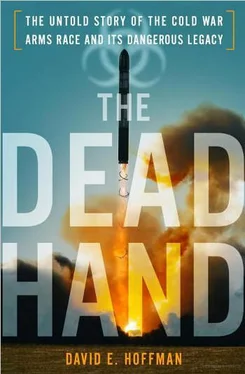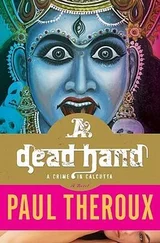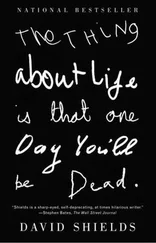For centuries, humans have sought to use toxins and toxic agents in war. The very terms “toxic” and “toxin” are derived from the ancient Greek toxikon pharmakon (arrow poison). The first biowarfare was conducted with what are called fomites—the crude use of filth, animal carcasses and contagion as weapons. These have been used to contaminate wells, reservoirs and other water sources of armies and civilian populations under attack since antiquity, through the Napoleonic era and into the twentieth century. 16
In World War I, advances in science and military technology gave rise to widespread use of chemical weapons. The use of German chlorine gas at Ypres on April 22, 1915, opened an epoch of horror. Over the next three years, 113,000 tons of chemical weapons agents were used in battle, killing more than 91,000 and wounding 1.2 million. 17In the aftermath, 128 nations signed an international agreement, the Geneva Protocol, on June 17, 1925, pledging never to use chemical or biological agents in war. The United States, despite being the country that championed the treaty, did not ratify the agreement at the time, and many nations signed but said they would reserve the right to retaliate with chemical weapons as a deterrent. 18
The Geneva Protocol was little more than a no-first-use agreement. It did not stop basic research, production or possession of chemical and biological weapons, and there were no provisions for inspection.
Chemical weapons consist of inert substances, such as arsenic, while biological weapons are made from living things, such as bacteria and viruses. A third category are toxins, which are isolated from living organisms, but unlike bacteria or viruses, they can’t replicate.
In the years that followed the Geneva Protocol, the race to discover biological weapons did not stop.
Japan’s quest was horrific. After reading of the Geneva accord in 1927, a Japanese military scientist, Lieutenant General Shiro Ishii, traveled the globe, and concluded Japan should arm itself with the weapon others were forsaking. The Japanese biological weapons program included four biological warfare units in China between 1936 and 1945. The largest of them during World War II was known as Unit 731, at Ping Fan in occupied Manchuria. Japan cultivated deadly bacteria and carried out large-scale, open-air testing of live pathogens, including anthrax as bacterial slurry in bombs. Japan also tested pathogens on prisoners of war. The precise death toll is not known but was in the thousands, and perhaps more if various epidemics are included. Japanese aircraft also dropped ceramic bombs containing plague-infested fleas, and grain to attract rats, in a series of field tests of aerial biological bombs on eleven Chinese cities in 1940. In the end, the military effectiveness of the Japanese weapons remains unclear. But the toll in death and suffering overall was large. 19
For Russian troops in the wars at the turn of the twentieth century—the Russo-Japanese war, World War I and the civil war of 1918–1921—infectious diseases transmitted naturally caused far greater casualties than battlefield wounds. Typhus was feared the most; an epidemic during the civil war made a deep impression on the military commanders—disease had been more deadly than bullets. The Red Army looked for methods to defend against disease, but also experimented with biological weapons. 20A British spy, in a secret intelligence report sent to London, described open-air tests of a crude aerial bomb in October 1926 on Kulali Island in the Caspian Sea. The bomb contained ampoules of tetanus bacilli in a steel cylinder, with blades that would cause it to rotate as it fell. At the right moment, the bomb exploded and the germs were broadcast out—the tests showed they were spread up to five hundred meters away and did not lose their virulence. 21
In 1928, a full-scale biowarfare program was ordered by the Soviet Union’s Revolutionary Military Council. The decree ordered the transformation of typhus into a battlefield weapon. The main biowarfare laboratory was located in Leningrad. One hundred miles north, at a prison camp on Solovetsky Island in the White Sea, additional tests were made in the 1930s with typhus, Q fever, glanders and melioidosis.
At the start of World War II, with the German advance, all the Soviet germ warfare facilities were hurriedly evacuated eastward by rail to the city of Kirov, where the whole effort was reassembled in the regional hospital.
At war’s end, the Soviet Union had acquired and weaponized a group of biological warfare agents they referred to as the golden triangle: plague, anthrax and cholera. Soviet troops had overrun the Japanese biological weapons headquarters in Manchuria in 1945. They found buildings destroyed by the retreating Japanese, but they seized prisoners and documents. In 1949, the Soviets tried a dozen Japanese prisoners who testified about germ warfare experiments. Details of the Japanese biological weapons program were sent to Moscow, including “blueprints for biological warfare assembly plants, far larger and more complex than our own.” Stalin ordered the Japanese plans to be used to build a military research facility in Sverdlovsk. Yet another laboratory run by the military was opened in the city of Zagorsk, north of Moscow, in 1953 for the study of viruses. And a remote base for germ warfare testing, which had been used in 1937–1938, was reactivated in the Aral Sea in the early 1950s. 22
Through the 1950s and 1960s, American intelligence agencies struggled to learn more about Soviet biological weapons, but without much success. There was a tantalizing hint about the island in the Aral Sea. It was first identified as a potential bioweapons testing site by Walter Hirsch, a captured German chemical warfare expert who mentioned the site in a 1951 report he wrote for the United States. 23The American intelligence community then examined everything they could find about the Aral Sea, but came up with nothing. A 1954 CIA intelligence estimate declared:
The USSR has the technical knowledge, trained personnel, and facilities necessary for a program of research and development in biological warfare, and we believe that such a program is almost certainly in progress. Firm evidence on the subject is, however, exceedingly scanty, and is likely to remain so because of the ease with which such a program can be concealed. Our estimates must be almost exclusively of what the USSR is capable of accomplishing in this field, rather than of what it has in fact accomplished. 24
In 1957, high-altitude photography of the island in the Aral Sea by U-2 spy planes showed more than 150 buildings, grouped into two settlements about two and a half miles apart. Still, intelligence analysts found the photos inconclusive. Another U-2 photo run was made in 1959. The photos offered no more clues; the U.S. analysts still had doubts. They said the facilities seemed too crude for testing of biological weapons. In 1965, the Soviet program still remained a mystery. A CIA study that year concluded: “Despite a considerable expenditure of time and resources, the pursuit of intelligence on biological warfare activities in the USSR has been unrewarding. There is no firm evidence of the existence of an offensive Soviet BW program.” The CIA analysts were puzzled because they expected to find a Soviet germ warfare program, but had not. They titled their report “The Enigma of Soviet BW.” 25
The United States entered the search for biological weapons early in World War II, following Great Britain, which feared the Axis powers would use the weapons. In October 1941, Secretary of War Henry Stimson asked the National Academy of Science for advice about the dangers. The response in February 1942 was that biological warfare was feasible. 26In May, a small civilian agency was set up, the War Reserve Service, under George W. Merck, chairman of Merck & Company, the pharmaceutical company, to begin developing a biological weapons program. In December, the army’s Chemical Warfare Service took over and prepared a large-scale research and development program. By April 1943, ground was broken for a research facility at Camp Detrick, Maryland, a small air national guard training site forty-five miles north of Washington. In December 1943, the Office of Strategic Services had received “inconclusive” intelligence that Germany might use biological weapons, perhaps putting anthrax or Botulinum toxin in their cross-channel rockets. 27The U.S. program was expanded, and more fully integrated into the War Department. Alarm about a possible German biological weapon led British Prime Minister Winston Churchill to ask the United States for 500,000 anthrax munitions. The army refitted a plant at Vigo, Indiana, in 1944 for the production of anthrax spore slurry. The Vigo plant was equipped with twelve 20,000-gallon fermenters, capable of producing fill for 240 four-pound anthrax bombs an hour. The plant underwent safety tests, but the war ended before production began. 28The Germans never weaponized biological agents; it turned out the Japanese program was much more active. During the war, the American biological weapons program was conducted with the secrecy equivalent of the Manhattan Project, and details were unveiled only in January 1946 by Merck. One aspect that remained hidden until later was the United States grant of immunity from prosecution to the leaders of Japan’s notorious Unit 731 in exchange for details about their research. 29
Читать дальше












